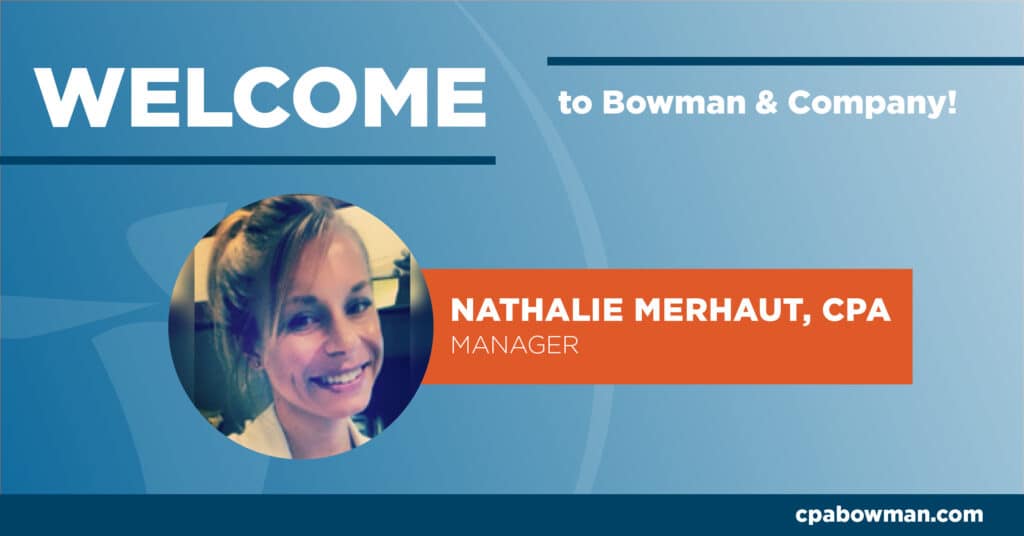Married taxpayers generally have the option to file a joint tax return or separate returns, a filing status commonly referred to as married filing separate (MFS). If you are married and you and your spouse are filing separate returns, or are considering doing so, you should read this article before making that decision.Depending on whether the taxpayers are residents of a separate or community property state, their separate returns may include just the income and eligible expenses of each filer or a percentage of their combined income and expenses.
Couples choose the MFS option for a variety of reasons:
- They want to avoid the joint and several liability for the tax from a joint tax return.Joint and several liability is a legal term for a responsibility that is shared by two or more parties to a lawsuit. A wronged party may sue any or all of them, and collect the total damages awarded by a court from any or all of them.
- They have children from a prior marriage and want to keep finances separate.
- They only want to keep their taxes separate.
- The marriage is tenuous.
- The taxpayers are separated and don’t want to cooperate in filing a joint return.
- One spouse might get a larger refund by filing separately (the other will pay more).
- They think they can save money by filing separate returns, and a variety of other reasons.
The fact of the matter is that tax laws are carefully written to keep married taxpayers from filing separately to manipulate the tax laws to their benefit. The following is a list of the more commonly encountered tax disadvantages – some might call them tax penalties –when filing as MFS. Unless otherwise noted the amounts shown are for 2023:
Filing Threshold – For all filing statuses except MFS the income threshold where a return must be filed is equal to the standard deduction for that filing status. For an MFS return the filing threshold is $5.
Community Property State Income – Unlike most states where each spouse claims their own earned income on an MFS return, in community property states the earned income is evenly split between the spouses. However, FICA payroll withholding, self-employment tax, and IRA contributions apply separately to the spouse who earned the income.
Joint & Several Liability – On a joint return both spouses can be held responsible for payment of the tax, while the spouses filing as MFS are only responsible for payment of the tax on their individual MFS returns.
Social Security Benefits Taxation Threshold – Social Security (SS) income is not taxable until taxpayers filing married joint have modified AGI (MAGI) that exceeds a threshold of $32,000. MAGI is regular AGI (without Social Security income) plus 50% of their Social Security income plus tax-exempt interest income, and plus certain other infrequently encountered additions. However, the threshold is zero for taxpayers filing as MFS. Thus taxpayers filing as MFS are taxed on 85% of every dollar of SS income.
Capital Loss Limitation –Where married couples filing jointly can annually deduct up to $3,000 of capital losses, those filing as MFS can only deduct up to $1,500.
Sec 179 Limitation – Taxpayers can elect to expense the cost of qualifying property used in the active conduct of a trade or business. The portion of the cost not expensed under Sec 179 is depreciable. The maximum amount that can be expensed is inflation adjusted annually and is $1,160,000 for 2023 (up from 1,080,000 in 2022). For MFS taxpayers the annual maximum amount must be allocated between the spouses.
Rental Loss Limitation – Generally, most taxpayers cannot deduct rental losses. However, there is aspecial rule that allows a deduction of aggregate losses from rental real estate activities up to $25,000 per year for taxpayers who are an active participant in the activity. It means that the taxpayer must participate in management decisions, and at least arrange for others to provide the necessary services such as repairs.
However, this special allowance only applies to lower income taxpayers with an AGI, without regard to passive losses, of $150,000 or less. In addition the $25,000 loss allowance begins to phase out 50 cents for each $1 of income over $100,000. Thus the allowance is fully phased out for joint filers when the AGI exceeds $150,000.
Phase out applies to gross income without considering passives, taxable Social Security benefits, or deductions for IRA.
Taxpayers filing as MFS must live apart the entire year or they get no relief under this rule. If they lived apart all year, the allowance is $12,500, and phase out begins at income of $50,000.
Traditional IRA – For taxpayers filing joint returns, a Traditional IRA is tax deductible except that the deductibility is phased out for higher income taxpayers who are active participants in an employer retirement plan. Where both spouses are active participants in an employer retirement plan the deductibility of IRA contribution in 2023 phases out for AGIs between $116,000 and $136,000. Where only one spouse is an active participant the phase out is between $218,000 and $228,000. However, for those filing MFS the phaseout is between $0 and $9,999.
Roth IRA – The ability to contribute to a Roth IRA phases out for those couples filing jointly between $218,000 – $228,000. However, for those living together and filing MFS the phase-out is range is $0 and $9,999.
Savings Bond Interest Exclusion – An individual who pays qualified higher education expenses with redemption proceeds from Series EE or I bonds issued after ’89 can potentially exclude from income the bond interest. No exclusion is available to a taxpayer filing married separate.
Higher Education Interest – An “above-the-line” deduction is allowed for interest payments due and paid on any “qualified student loan,” regardless of when a taxpayer first incurred the loan. The maximum deduction per year is $2,500. However, for those filing MFS, no deduction is allowed.
Standard Deduction – The deduction for those filing as MFS is ½ of the standard deduction for married filing joint taxpayers plus the age 65 and blind add-on amounts.
Standard Deduction vs Itemized Deductions – Generally taxpayers can choose between taking the standard deduction or itemizing deductions. However, where both spouses are filing as MFS if one itemizes, then both must itemize, a tax trap often overlooked by MFS filers.
Medicare Premiums – For taxpayers who qualify forMedicare, the premiums are based upon their modified adjusted gross income (MAGI) and filing status from the tax return two years prior. The rates for individuals filing MFS are substantially higher than for other Medicare participants.
Home Mortgage Interest – MFS spouses are treated as if they are one taxpayer and must split between them the amount of mortgage interest deduction they would be entitled to jointly. If two homes are involved, each spouse can only claim interest on one home unless they agree one can claim both.
State and Local Taxes Deduction – When itemizing deductions, the tax code limits (referred to as the SALT limitation) the deduction for state and local taxes, such as state income or sales tax and property tax, to $10,000 for all filing statuses except MFS, which is limited to $5,000.
Alternative Minimum Tax (AMT) – For MFS taxpayers the AMT exemption amount is only half of the amount for those filing jointly and the income threshold for the 28% tax rate is half of what it is joint filers.
Tax Rates – The marginal rates for MFS are twice that of married taxpayers filing jointly.
Child & Dependent Care Credit – MFS taxpayers cannot claim this credit unless legally separated. Where it can be claimed, the AGI credit phaseout threshold is $75,000 (half of that allowed for joint filers).
Earned Income Tax Credit (EITC) – The EITC is a tax credit for low-income taxpayers. Where one spouse can file as head of household (HH) instead of MFS and lives in a community property state, earned income for the credit does not include amounts earned by the other spouse. For a spouse to claim HH instead of MFS, he or she must have lived apart from their spouse at least the last six months of the year and paid more than one-half of the cost of maintaining a household which is the principal place of abode for more than one-half the year of a child, stepchild, or eligible foster child for whom the taxpayer may claim a dependency exemption.
Adoption Tax Credit – Allowed for an MFS taxpayer only if the spouses lived apart for the last 6 months of the year and the child lived with taxpayer more than half the year and the taxpayer provided over half the cost of maintaining the home.
Elderly & Disabled Tax Credit – Not allowed for those filing as MFS.
Retirement (Saver’s) Credit – The maximum AGI to be eligible for any Saver’s Credit for those filing jointly in 2023 is $54,750 while for those filing MFS it is $36,500.
Tax Withholding – MFS taxpayers only claim their own income tax withheld unless they are residents of a community property state where they each claim half.
Estimated Tax Allocation – When taxpayers make joint estimated tax payments, they can allocate the payments between themselves in any amounts they can agree upon. If they cannot agree, they must divide the payments in proportion to each spouse’s individual tax as shown on their separate returns for the year.
Estimated Tax High Income Safe Harbor – Taxpayers are subject to an underpayment penalty when their tax liability less the sum of their withholding and estimated tax payments is more than $1,000. However, there is a high income exception to the penalty when the AGI for the previous year is over $150,000, in which case the required estimated payments are the smaller of 90% of the current year’s tax, or 110% of the previous year’s tax. If filing MFS the AGI for the previous year need only be over $75,000.
Premium Tax Credit – The premium tax credit is a refundable credit available to lower income taxpayers to help them offset the cost of purchasing their health insurance from a government marketplace. Taxpayers filing MFS cannot claim this substantial credit unless they are a victim of spousal abuse or abandonment.
Automatic 2-month Extension When Out of the Country – Taxpayers who are out of the U.S. on the tax filing due date are granted an automatic 2-month extension to file their tax return. This provision applies to both spouses when filing a joint return even if only one spouse is out of the country. When filing MFS, the extension will only apply to the spouse that is out of the country.
Many of the consequences listed interact with others and generally require professional tax software to account for all of interactions and to accurately compare the results for a couple filing jointly or each filing separately.
If you have questions or would like to schedule an appointment to see how the consequences of filing separate returns might apply to your situation, please give the office a call.




